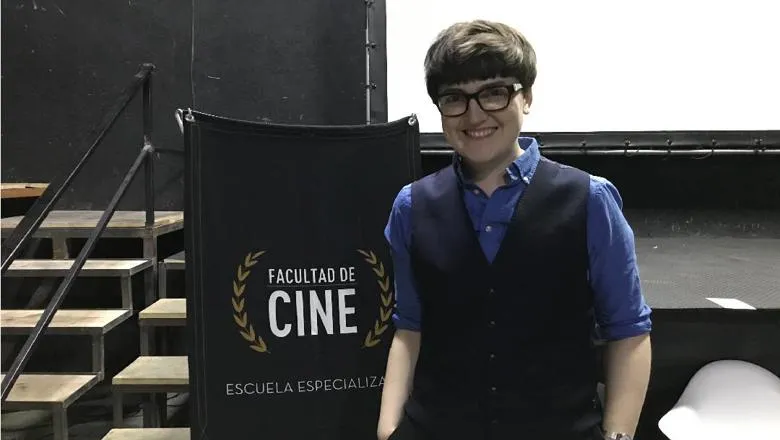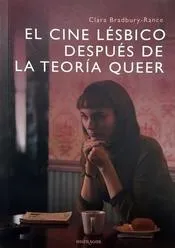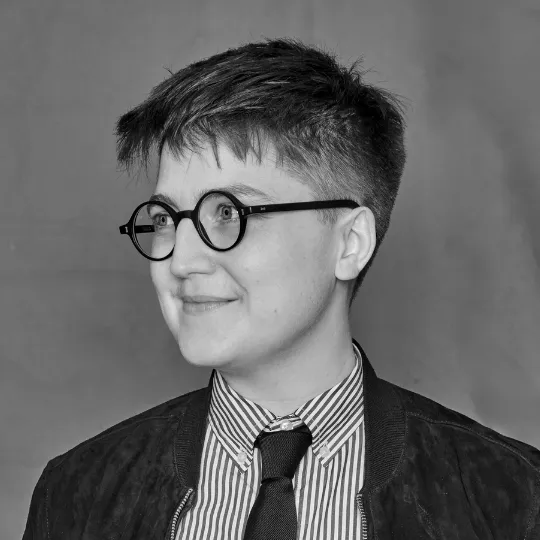We have begun to see popular culture mainstreaming lesbianism in a way that might not have been imaginable even at the turn of the century. But there is still a lot more work to be done, including in Mexico. In my book I choose 8 main films that challenge the simple definition of “visibility” as the sex scene, the couple, or the coming out scene. But I look forward to a diversity of different representations.”
Dr Clara Bradbury-Rance (Source: La Tempestad)
16 December 2019
Lesbian Cinema after Queer Theory launches in Spanish
Dr Clara Bradbury-Rance visits Mexico for the launch of the Spanish translation of her book, 'Lesbian Cinema after Queer Theory'.

Last month, Dr Clara Bradbury-Rance celebrated the Spanish translation of her book Lesbian Cinema after Queer Theory on a book tour in Mexico. The tour was supported by the British Council Mexico, the Goethe Institute Mexico, the Facultad de Cine, the Cineteca Nacional, the Comisión Nacional para Prevenir la Violencia contra las Mujeres, and Mic Género, a touring film festival in Mexico that celebrates representations and discussions of gender.
The book was translated into Spanish by Osífragos, the editorial branch of the Agencia de Cooperación Global para el Intercambio Cultural, and launched at the Facultad de Cine, where Clara presented the book to an audience of film students, journalists, film programmers and members of the general public.
The book, entitled El Cine Lésbico después de la Teoría Queer in Spanish, features readings of contemporary films such as Blue Is the Warmest Colour, Water Lilies and Carol, shedding light on the conditions of lesbian legibility in the twenty-first century.

During the four-day visit to Mexico, Clara was invited by the Cineteca Nacional, to run a workshop which welcomed filmmaking students to think differently about representations of queer desire on screen. Clara also joined a public dialogue about lesbian cinema at the Goethe Institute Mexico with Lulú Gil Alvaradejo, Director of the Cine Queer Mexico festival, and was invited to address students in Film and Digital Humanities at Benemérita Universidad Autónima de Puebla.
The launch was covered in the news by La Tempestad and Plumas Atómicas. In her interview with Plumas Atómicas, Clara spoke on themes relating to feminism, gender, sexuality, cultural stereotypes and visibility.
About Dr Clara Bradbury-Rance
Clara is a Liberal Arts Early Career Development Fellow in Digital Culture, she joined King’s in September 2017 in the Departments of Liberal Arts and Digital Humanities. Clara’s research interests include Lesbian cinema and media, feminist and queer theory, digital culture, contemporary cinema and feminism in popular culture. She has spoken nationally and internationally on lesbian cinema, gender, sexuality, popular culture and feminism pedagogy.
Lesbian Cinema after Queer Theory is available to purchase online at Edinburgh University Press.

